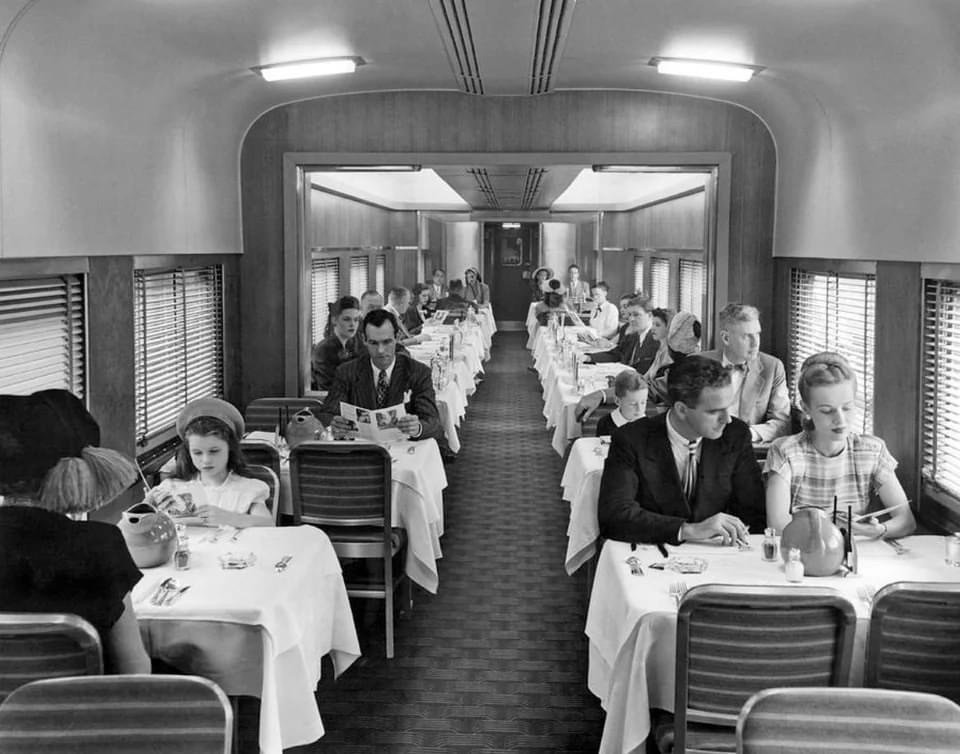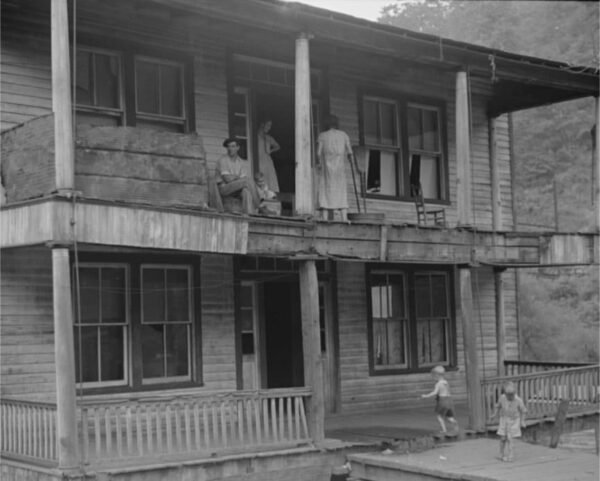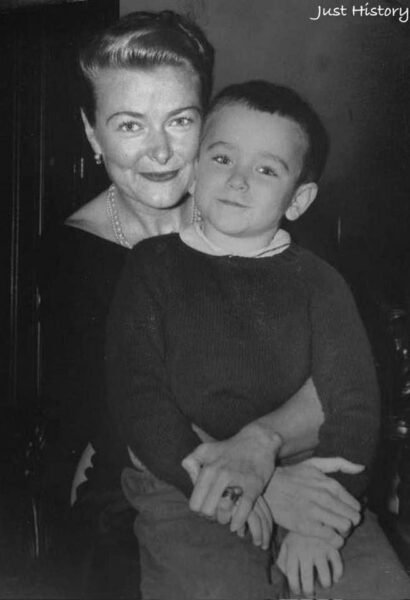The Golden Era of Rail Travel
The 1940s marked a significant era in the history of American rail travel. It was a time when trains were not just a mode of transportation but a symbol of elegance and sophistication. The dining car experience, in particular, was a highlight of long-distance train travel, offering passengers a taste of luxury and fine dining while they journeyed across the country.

The Ambiance of the Dining Car
A Moving Restaurant
The dining cars of the 1940s were akin to rolling restaurants, designed with an eye for detail and comfort. Polished wood, brass fixtures, and crisp linen tablecloths set the scene. Large windows offered panoramic views of the passing landscapes, making each meal a scenic adventure.
Attentive Service
Passengers were greeted by impeccably dressed waitstaff, often in white jackets and black bow ties. The service was attentive and formal, reflecting the high standards of hospitality of the era.
Culinary Delights on the Rails
Gourmet Menus
The menus in these dining cars were a far cry from today’s fast-food options on trains. They featured gourmet dishes, often prepared on the train by skilled chefs. Classic American cuisine, along with regional specialties, graced the menu, offering a culinary journey as exciting as the travel itself.
Fresh and Local Ingredients
With frequent stops along various regions, dining cars often sourced fresh, local ingredients, ensuring high-quality, flavorful meals. This practice also introduced passengers to the local cuisine of the areas they were traveling through.
Socializing and Networking
A Social Hub
The dining car was more than just a place to eat; it was a social hub. It provided an opportunity for passengers to interact, share stories, and make new acquaintances. Business travelers often used this time to network, while others enjoyed the chance to socialize in an elegant setting.
The Legacy of Train Dining
A Bygone Era
While the golden age of rail travel has passed, the dining car experience of the 1940s remains a cherished memory in American history. It symbolizes a time when travel was as much about the journey as the destination, and dining was an integral part of the experience.
Preservation and Nostalgia
Today, many rail enthusiasts and historians work to preserve this piece of history. Restored vintage trains and themed journeys recreate the dining car experience, allowing modern travelers to step back in time and relive the elegance and charm of 1940s rail travel.
In conclusion, the dining car experience of the 1940s was a hallmark of luxury and sophistication in American rail travel. It was a time when the journey was savored just as much as the destination, and the dining car played a central role in making train travel a memorable and enjoyable experience.
What Made Dining in a 1940s Train Car Special?
The dining experience in a 1940s train car was special due to its combination of luxury, fine dining, and the unique opportunity to enjoy gourmet meals while traveling across diverse landscapes. The attention to detail in service, ambiance, and culinary offerings made it a memorable part of the journey.
How Did the Menu in a 1940s Dining Car Differ from Today’s Train Food?
Menus in the 1940s dining cars were more akin to those found in high-end restaurants, featuring gourmet dishes prepared by skilled chefs. Unlike today’s more fast-food-oriented train menus, they offered a range of sophisticated options, often using fresh, locally-sourced ingredients.
Was the Dining Car Experience Accessible to All Passengers?
The dining car experience was generally geared towards first-class passengers. However, the level of accessibility varied depending on the train and the route. Some trains offered different dining experiences for different classes, while others provided a universal standard of service.
What Role Did the Dining Car Play in the Social Life of Passengers?
The dining car was a social hub, providing a space for passengers to interact, network, and share stories. It was an integral part of the travel experience, offering a break from the confines of the passenger seats and an opportunity for meaningful social interaction.
How Were the Dining Cars Staffed?
Dining cars were staffed by a team of professionals, including chefs, waiters, and sometimes a maître d’. The staff was known for their professionalism, attention to detail, and impeccable service, contributing significantly to the overall experience.
Did Dining Cars Serve Alcohol?
Yes, many dining cars in the 1940s served alcohol. They often had a selection of fine wines, spirits, and beers, adding to the luxurious experience of dining on the train.
How Has the Dining Car Experience Influenced Modern Train Travel?
While modern train travel is more efficiency-focused, the legacy of the 1940s dining car experience lives on in luxury train services and themed journeys. These experiences aim to recreate the elegance and enjoyment of dining on the rails from that era.
Are There Any Remaining 1940s Dining Cars in Operation?
There are a few restored 1940s dining cars in operation, mainly on heritage and tourist railways. These cars offer a glimpse into the past and allow passengers to experience a piece of rail travel history.
Can You Host Private Events in a Vintage Dining Car?
Yes, some heritage and tourist rail lines offer the option to host private events in restored vintage dining cars. This can provide a unique and nostalgic setting for special occasions.
What Can Modern Rail Services Learn from the 1940s Dining Car Experience?
Modern rail services can learn the importance of making the journey an integral part of the travel experience. By focusing on comfort, quality of service, and the overall ambiance, train travel can be more than just a means to an end—it can be an enjoyable and memorable experience in its own right.
As an Amazon Associate we earn from qualifying purchases through some links in our articles.




